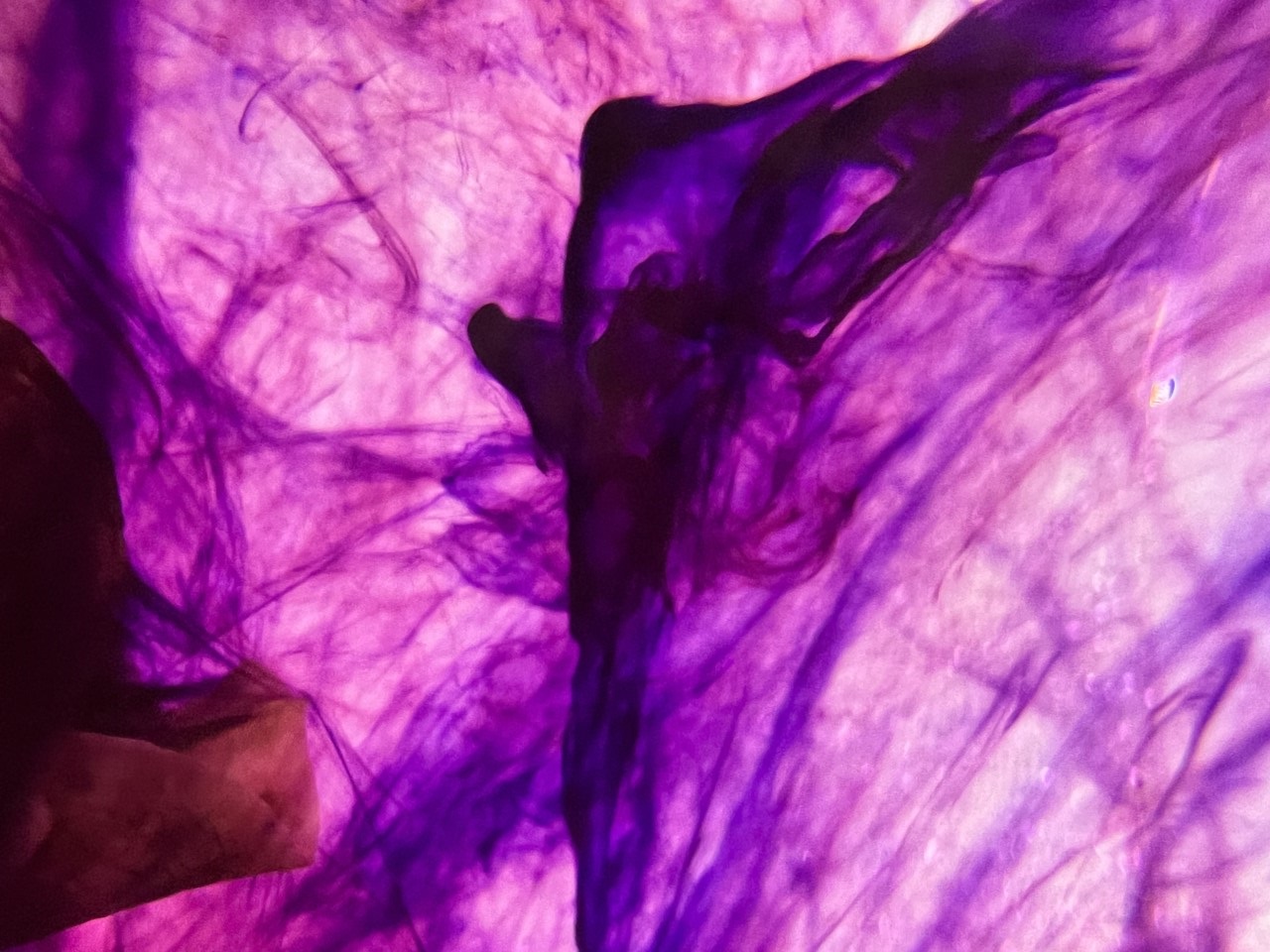Snapshots in Neuroscience: Aplysia inking during sensitization
This image has been selected to showcase the art that neuroscience research can create.
As described by Dr. Puthanveettil and colleagues: The image shows inking response to sensitization training in the marine sea slug, Aplysia california. Aplysia releases a cloud of dark purple ink in response to a noxious stimuli. Sensitization training, a form of non-associative learning, involves delivering brief electric shocks to the tail and measuring siphon withdrawal reflex response. In this behavioral training paradigm, a brief electric shock to the tail produces short-term sensitization lasting several minutes whereas four spaced shocks produce long-term sensitization lasting several days.
Sadhu et al show by quantitative proteomics analysis that short-term and long-term sensitization training differently alter the composition of protein cargos transported by molecular motor Aplysia kinesin heavy chain 1 (ApKHC1). Their results suggest regulation of the expression and composition of anterogradely transported cargos during learning and underscore the significance of kinesins in establishing long-term memory storage.

Read the full article:
Short-Term and Long-Term Sensitization Differentially Alters the Composition of an Anterograde Transport Complex in Aplysia
Abhishek Sadhu, Kerriann K. Badal, Yibo Zhao, Adia A. Ali, Supriya Swarnkar, George Tsaprailis, Gogce C. Crynen, and Sathyanarayanan V. Puthanveettil
FOLLOW US
POPULAR POSTS
TAGS
CATEGORIES


 RSS Feed
RSS Feed




